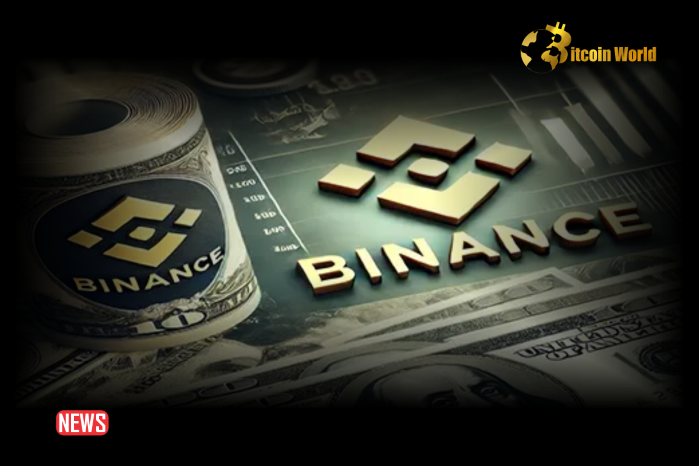After a year under the regulatory microscope in the United States, Binance has scored a significant win! The crypto exchange has received court authorization to invest customer fiat funds into the safe haven of US Treasury Bills (T-Bills). This landmark decision is not just a procedural green light; it’s a strong signal of progress in Binance’s ongoing efforts to navigate the complex US regulatory landscape. And guess what? The market has responded positively, with Binance Coin (BNB) seeing a notable price jump, inching closer to the coveted $600 mark.
Court Grants Relief: What Does It Mean for Binance US?
Let’s break down what exactly happened in court. According to court documents, BAM Trading Services and BAM Management US Holdings (collectively known as BAM), Binance’s US subsidiary, requested the court to modify a previous consent order. Essentially, they asked for permission to manage their assets more effectively. The court reviewed their request and gave them the go-ahead.
Here’s the crux of the court’s decision:
- Investment Freedom: BAM is now authorized to bring in third-party investment advisors. This is a big deal because it allows BAM to invest client fiat funds into US Treasury Bills. Think of T-Bills as ultra-safe, short-term government debt.
- Client Funds at Work: This means that some of the fiat currency that Binance US holds for its customers can now be invested in these T-Bills. Currently, these funds are held with BitGo, a digital asset trust company.
- Rolling Investments: The investments in T-Bills will be done on a rolling four-week basis. This likely means they’ll reinvest the funds every four weeks, maintaining liquidity and flexibility.
- No Binance Interference: To maintain independence and compliance, Binance Entities (the broader Binance group) are explicitly prohibited from being involved in these investment decisions or processes.
- Liquidity is Key: BAM must ensure they have enough USD readily available to meet customer withdrawal requests, even while funds are invested in T-Bills. This is crucial for user trust and platform stability.
- Transparency is Required: BAM is obligated to update its terms of service and inform customers about these new investment activities. Expect to see updates to Binance US’s user agreements soon.
More Than Just T-Bills: What Else Did the Court Approve?
The court’s decision wasn’t just about T-Bills. It also addressed the custody of customer assets, adding another layer of security and compliance.
Key takeaways regarding asset custody:
- Third-Party Custodians Welcome: BAM is now permitted to use non-affiliated third-party custodians based in the US to hold assets. This diversifies risk and enhances security.
- US Control: BAM Trading officers and employees located in the United States will have sole control over the private and administrative keys for these wallets. This reinforces US-based management and oversight.
- Dual Approval System: All transfers and withdrawals from these third-party custody wallets will require approval from both BAM Trading and the custodian. This dual-key system adds an extra layer of protection against unauthorized transactions.
- Binance Entities Stay Out: Crucially, Binance Entities (the global Binance organization) will not have custody, possession, or control over assets held with these US-based third-party custodians. This further separates Binance US operations and asset management from the global entity.
Navigating the Regulatory Landscape: A Step Forward for Binance?
This court approval comes on the heels of Binance’s significant settlement with the US government in November, where they agreed to pay a hefty $4.3 billion penalty. This settlement included a substantial forfeiture and fine, and also led to the resignation of former CEO Changpeng Zhao (CZ), who is currently serving a four-month sentence for Bank Secrecy Act violations.
The recent court decision can be viewed as a positive step in Binance’s journey to enhance its compliance and rebuild trust in the US market. Allowing BAM to invest in T-Bills and use third-party custodians signals a commitment to operating within regulatory frameworks and safeguarding customer assets.
BNB Price Reacts: Is $600 Within Reach?
The market certainly seems to like the news. Currently, BNB is trading around $597, marking a 5% increase following the announcement. This recovery is part of a broader upward trend, as BNB has rebounded significantly from lows of $455 seen on July 5th.

Looking at the numbers, BNB has shown impressive gains recently:
- 7-Day Growth: Up 12%
- 14-Day Growth: Up 20%
- Trading Volume Surge: A 47% increase in trading volume over the past few days, reaching $1 billion, according to CoinStats data.
Despite this positive momentum, BNB is still about 17% below its all-time high of $717, reached on June 6th. However, technical analysis suggests further potential upside.
Bullish Signals for BNB:
- 200-Day EMA Breakout: BNB has broken above its 200-day exponential moving average (EMA), a key technical indicator (represented by the yellow line in the chart). Historically, trading above this EMA has signaled continued price appreciation.
- Support Level: The 200-day EMA now acts as a potential support level for BNB’s price.
- Resistance Levels Ahead: If the bullish trend continues, BNB will face resistance at $610, $633, and $675. Breaking through these levels could pave the way for a move towards its all-time high.
The Road Ahead for Binance US
Binance securing court approval to invest customer fiat in US T-Bills is undoubtedly a significant development. It demonstrates progress in their compliance efforts and injects a dose of optimism into the market, as reflected in BNB’s price surge. While challenges in the regulatory landscape undoubtedly remain, this decision marks a positive step forward for Binance US and its users. It will be interesting to see how these new investment strategies and custody arrangements play out and how they further shape Binance’s operations in the United States.
Disclaimer: The information provided is not trading advice, Bitcoinworld.co.in holds no liability for any investments made based on the information provided on this page. We strongly recommend independent research and/or consultation with a qualified professional before making any investment decisions.


